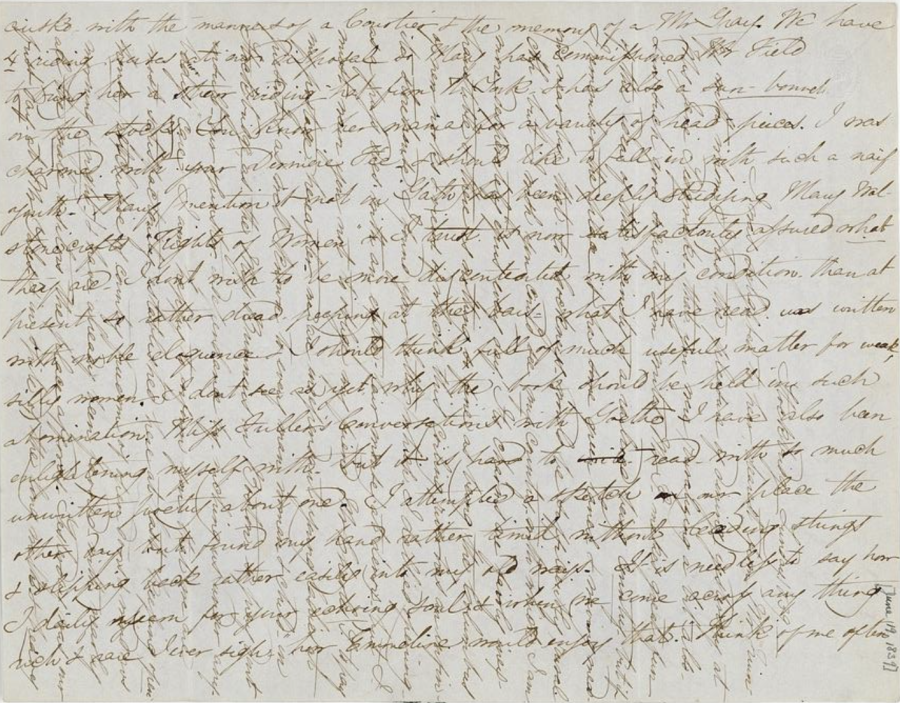A Trip Down Memory Lane: How the Brain Stores and Distinguishes Memories
The 19th-century practice of cross-writing (a method to save paper) is analogous to how the brain stories memories—rotating them while still leaving both perception and recollection legible
What is your first memory? Which moment can you relive as if it were yesterday? Close your eyes and try to picture it—the colors, the sounds, the smells. Losing your first tooth. That big test.
Now open your eyes and look at the moment you are living in. Days, weeks, or months from now, it will all be another memory. What is the difference between the recordings cataloged in your mind and the present moment that you are perceiving?
On the surface, the distinction between memory and perception seems clear. No one ever confuses them (except in dreams and hypnagogic states between alertness and sleep). But neuroimaging studies have revealed that parts of the brain that were thought to only be active during sensory perception are also active during recollection of the past.
“People have this intuitive idea that the perceptual experience is like a roaring flame and the memory experience is like a flickering candle,” says Brice Kuhl, a neuroscientist at the University of Oregon. The difference between the two may simply lie in the hierarchical organization of the brain—one that leads memories to be distinct pieces of information that are still tied to the original experience.
By recording the brain activity of participants when they were shown previously memorized images, scientists studied the ways that neurons recognized and remembered the perception. They found that each neuron corresponds to a particular area in your field of vision. When you actively perceive an image, the breadth of this receptive field is very small, allowing for great specificity. However, when recalling the memory of it, each receptive field region is much larger. When the memory is stored, only a high-level overview of it is actually kept.
While this loss of small details may sound alarming, it is actually more beneficial than you’d think. By putting less energy into recreating every pinprick of light and focusing instead on the general shape and form of things, the crispness of perception morphs into blurrier but more useful recollections. This change in resolution is also what allows for our distinction between the two.
Strangest of all, the “images” we conjure in our mind’s eye might not be images at all. Researchers discovered that between perception and recollection, brain activity moves from areas that also respond to words for places to ones correlated to abstract ideas. This shift shows that memory is as much linguistic, ideological, and abstract as it is visual. “We’re so fixated on using perceptual experience as a template. But I think that has blinded us a little bit,” says Kuhl.
The moment you lost your first tooth—the metallic sting, the color of your shoelaces– is forever gone. Yet, the moment lives on within you, continually shaping the present. Memory is omnipresent, yet intangible. As each moment passes, becoming a memory in turn, we must reach into the mind and remember that (as Aristotle wrote too long ago for memory) “knowing yourself is the beginning of all wisdom.”

